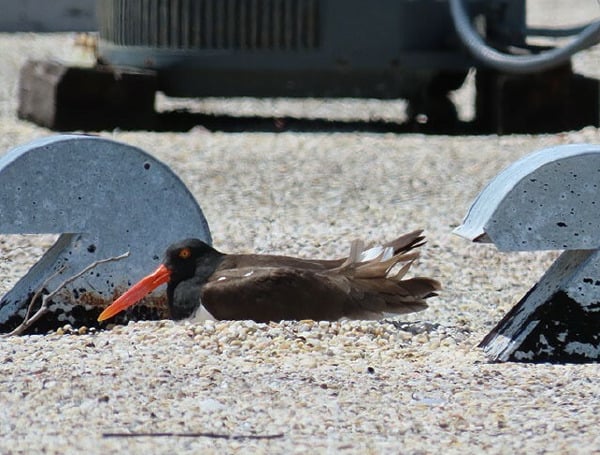As Florida’s shorebird nesting season gets underway, the Florida Fish and Wildlife Conservation Commission (FWC) is extending its gratitude to an essential group of conservation partners: building owners and managers whose properties host nesting shorebirds and seabirds.
While coastal beaches are the traditional nesting grounds, several species, including black skimmers, least terns, roseate terns, and American oystercatchers, are increasingly utilizing gravel rooftops to lay eggs and raise their chicks.
READ: Political Firestorm Erupts Over $10M Donation To Hope Florida Following House Hearing
This adaptation makes rooftops crucial alternative habitats, especially since many of these rooftop-nesting species are considered imperiled. The FWC highlights the significance of this trend, noting that approximately 50% of Florida’s least tern population now depends on rooftops for nesting success.
The primary nesting season on rooftops occurs between April and September, although some species like American oystercatchers may start as early as February. Florida’s official shorebird and seabird nesting season runs from February 15 to September 1, with specific timing varying by region.
The FWC emphasizes the vital role building owners and managers play in the survival of these birds. If shorebirds or seabirds are discovered nesting on a roof, the agency recommends the following:
- Give Them Space: Minimize disturbance around nesting areas.
- Postpone Maintenance: Delay routine maintenance and non-emergency repairs until after the nesting season ends in September.
- Coordinate with FWC: If unexpected or emergency repairs are necessary during the nesting season, contact your FWC Regional Shorebird Biologist. They can help assess the situation, determine if harm (“take”) could occur, and guide owners through the permit process if needed. Building owners can find their regional biologist contact information at
MyFWC.com/Shorebirdsby clicking on “Shorebird Nest Dates and Contacts.”
“Building owners and managers are key partners in the success of shorebirds nesting on rooftops,” an FWC statement noted. Their cooperation directly contributes to the conservation of vulnerable bird populations.
The FWC also outlined ways the general public can help nesting shorebirds, whether they nest on rooftops or traditional beaches:
- Show Appreciation: If visiting a hotel or business with rooftop-nesting birds, thank the management for supporting conservation.
- Become a Monitor: Inquire about becoming a Qualified Rooftop Monitor.
- Keep Your Distance: Stay at least 300 feet away from nesting birds, walk around flocks, and respect posted area closures. Getting too close can cause birds to flush, leaving eggs and chicks vulnerable.
- Pet Management: Keep pets at home or on a leash on designated dog-friendly beaches, well away from nesting areas.
- Proper Trash Disposal: Securely stash trash and food scraps, which attract predators like raccoons and crows. Dispose of fishing line properly in designated monofilament recycling stations to prevent entanglement.
- Leave No Trace: Remove personal gear (chairs, umbrellas) and fill in any holes dug in the sand before leaving the beach to prevent trapping birds or hatchlings.
- Respect Closures: Heed signs for Critical Wildlife Areas (CWAs), which are closed to public access to protect nesting colonies. Boaters should also maintain distance and keep noise levels low near CWAs.
READ: US Coast Guard: Fishing Vessel Runs Aground Near Massachusetts, Crew Rescued, Fuel Spill Addressed
By working together, the FWC, property managers, and the public can help ensure a successful nesting season for Florida’s unique shorebird and seabird populations.
Please make a small donation to the Tampa Free Press to help sustain independent journalism. Your contribution enables us to continue delivering high-quality, local, and national news coverage.
Connect with us: Follow the Tampa Free Press on Facebook and Twitter for breaking news and updates.
Sign up: Subscribe to our free newsletter for a curated selection of top stories delivered straight to your inbox.
